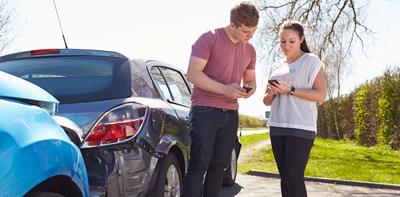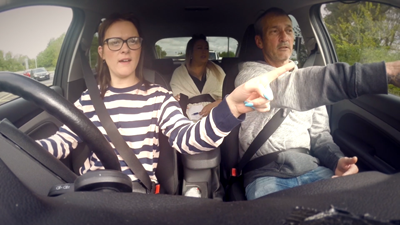
Buying a used car can save you a lot of money. And you’ll be spoilt for choice too.
On the other hand, used cars come with greater uncertainty. It’s not always easy to find out about the car’s history, or how well it has been cared for.
But if you are thorough, you can buy a good car, grab a bargain and drive home happy.
Check the car
Have a good look at the car, inside and out. Always do this in the daytime and it’s a good idea to take someone else along with you for a second pair of eyes.
The AA has a useful checklist for what to look out for when inspecting a used car and if you're not sure or not comfortable doing all these checks yourself, then get a professional to look at the car for you.
It’s essential you test drive the car. But before you do, check with your insurance company that you’re covered to drive another car - you can arrange temporary cover if not - and take proof of your insurance with you when going to view the car.
Do your research and find out that the vehicle is worth. Ask yourself, is it too good to be true?
Make sure the paperwork is right
Always make sure all the paperwork is in order before buying a used car.
To do all the right checks, you'll need details including the vehicle's registration number, make, model, MOT test number and V5C vehicle registration certificate (log book), which tells you the basics about the car’s ownership history.
Check the log book carefully, to ensure it matches the details you’ve been given.
Seek out the vehicle identification number (VIN) on the car, and ensure it matches the one in the log book. The VIN serves as the vehicle’s unique fingerprint and is normally found on the driver's side at the corner of the dashboard where it meets the windshield, or by driver's side door post.
The Police advise buyers to look at the quality of VIN stickers and consider: do they appear bright and freshly printed or do they look fuzzy or distorted? Both may be an indication something may be wrong or cloned.
Check that the details you've been given match DVLA's information at its website. This will tell you about:
- when its current vehicle tax expires
- when its MOT expires
- the date it was first registered
- colour
- engine size
- year of manufacture
- CO2 emissions
- tax rate
Then enter the car’s registration number to check the past results of a vehicle’s MOT tests, including:
- if it passed or failed
- the mileage recorded when it was tested
- where each test was done
- what parts failed at each test, and if any parts had minor problems
- when its next MOT is due. The longer the period before the next MOT is due, the better.
The same search will tell you if the manufacturer has recalled a vehicle, part or accessory because of a serious safety problem.
For extra peace of mind, you can also pay as little as £10 for an organisation such as the RAC, AA, or HPI Check to do a data check. They’ll check for things like:
- Stolen, scrapped or write-off alerts
- Previous plates or colour changes
- Outstanding finance
- Mileage discrepancies
- A private sale and dealer valuation
- Road tax costs and fuel expenses
The police go one step further and urge other checks including:
- Contact any garage that has carried out service to warranty work and confirm the details. In addition, check the quality of the paper documents and consider whether they might be false.
- Be cautious if buying a car with only one key as most stolen vehicles are only ever taken with one key.
- Ask to see some photo ID of the seller and check the name matches the name in the log book.
- Arrange to buy the car at the seller's home or business address, rather than from a car park or street. Ask to see utility bills to confirm it’s their address.
- Ask the seller why they're selling the vehicle. Does it sound believable? Beware of sellers selling on behalf of 'friends' or 'relations’.
What do after you hand over your money
Finally, if you buy the car avoid using cash. Paying with a debit or credit card provides you with better protection.
Make sure the seller writes a receipt for you. This should include the make, model, engine size, registration and chassis number, plus your address, the seller’s address and the amount paid.
It should then be signed and dated by both of you.
Once you've bought the vehicle, you have to register it, insure it and tax it. The car tax won’t be transferred with the vehicle, so you must tax it before you can use it.


